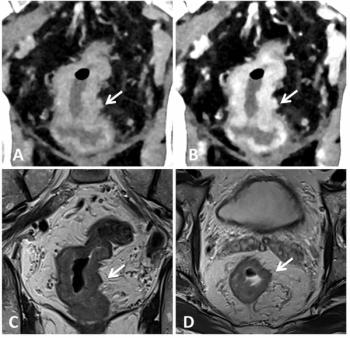
Technology advancements spur new MRI test standards
The National Electrical Manufacturers Association has published four standards that are part of a series of test standards developed by the medical diagnostic imaging industry for the measurement of performance parameters, such as noise levels, energy deposition, and electric field strength, that govern image quality of MRI systems.
The National Electrical Manufacturers Association has published four standards that are part of a series of test standards developed by the medical diagnostic imaging industry for the measurement of performance parameters, such as noise levels, energy deposition, and electric field strength, that govern image quality of MRI systems.
These test standards - one revised and three new - are intended for use by equipment manufacturers, testing houses, prospective purchasers, and users alike. They can serve as reference procedures for acceptance testing and periodic quality assurance. Often, they form the basis for federal regulations.
- MS 4-2006, Acoustic Noise Measurement Procedure for Diagnostic Magnetic Resonance Imaging Devices, has undergone a substantial revision because the gradient performance of modern MR scanners has advanced significantly, making some basic assumptions and guidance in the original standard obsolete.
- MS 10-2006, Determination of Local Specific Absorption Rate (SAR) in Diagnostic Magnetic Resonance Imaging, is used for measuring local regions of high SAR from radiofrequency power deposition. NEMA standard MS 8 is useful for measuring whole-body average SAR. By using both MS 8 and MS 10, it is possible to completely characterize RF power deposition, both whole-body and local.
"Research has demonstrated that localized heating is a limiting safety factor in MRI, and it is becoming increasingly important to characterize this local heating as MRI technology advances," said Michael Steckner of Hitachi Medical Systems and a member of the NEMA Magnetic Resonance Technical Committee. "This standard provides the tools to experimentally measure localized heating, complementing the MS 8 standard and thereby extending and enhancing our understanding of this important safety issue."
- MS 11-2006, Determination of Gradient-Induced Electric Fields in Diagnostic Magnetic Resonance Imaging, presents a measurement method for determining gradient-induced electric fields, which affect the safety and comfort of patients.
"As gradient system performance increases, there is also a need for experimental tools to quantify the gradient induced electric fields," Steckner said. "MS 11 provides the tools to experimentally measure these electric fields and complements the international MR safety standard, IEC 60601-2-33 (2002), which sets limits for patient safety and comfort."
- The demand for medical imaging is increasing both in volume and scope, requiring a detailed analysis of MR scanner geometric distortion characteristics for some of the new special applications. MS 12-2006, Quantification and Mapping of Geometric Distortion for Special Applications, provides a series of recommendations on how to measure and present the distortion analysis information in order to meet this growing need.
Standards are available for purchase at the
For more information from the Diagnostic Imaging archives:
Newsletter
Stay at the forefront of radiology with the Diagnostic Imaging newsletter, delivering the latest news, clinical insights, and imaging advancements for today’s radiologists.



























